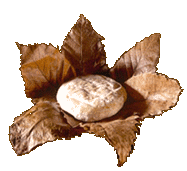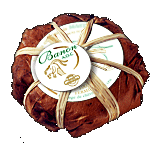From the Gallo-Roman era to to-day ...
The history of Banon certainly began a long time ago because the legend tells us that the Roman emperor Antonin LE PIEUX (86 – 161) « ate so much of it that he died »
More seriously, several texts authenticate the presence of goat’s cheese in our region since the Middle Ages, notably in the form of Tome (Toumo in Provençal) which is the Banon presentation before being set into leaves.
A. QUENIN, tells us that the product appears for the first time in 1270 on the trade fairs and markets, because, this local scholar adds, the term « cheese of Banon » is mentioned in old sentences of Banon and Saint-Christol.
In 1849 the abbé FERRAUD, a famous monograph of the Low Alps writes under the word Banon “there are in Banon several popular trade fairs. The cheese sold there is really appreciated.
Milk turned into cheese for the need of preserving !
To understand the Banon we have to go back to the conditions of life of the farmers in the Lure area at the end of the 18th century.
The soil was very poor and the aim was mainly to take the best advantages of the meagre natural resources of the area. Besides a pig and a small amount of poultry, each family bred a domestic herd with ewes and goats. These animals complimented each other in the field because they made the best use of the surrounding moor and undergrowth, but also from an economic point of view. Whereas the sheep were used for meat, the goat, because at that time it was known as the “poor man’s cow”, was there to produce milk. This milk was used in its fresh state for feeding the family, but also turned into cheese, the only way to keep its nutritious value as long as possible.
If the cheese is for household use, its commercial value comes from the inadequacy between production and familial consumption.
The surplus goods are sent to local markets to be sold.
And there, Banon, administrative centre of canton and geographic centre of the Lure and Albion districts, crossroad of main road links, was the most important place for these trade fairs and cheese markets, hence the name of the appellation …
After the war there was a gradual technical progress in the way of making cheese, the goat’s herds became specialized, it was no longer made in the household: cheese was first produced to feed the family and sometimes to be sold, now it’s first of all made to be sold (the surplus feeding the family).




